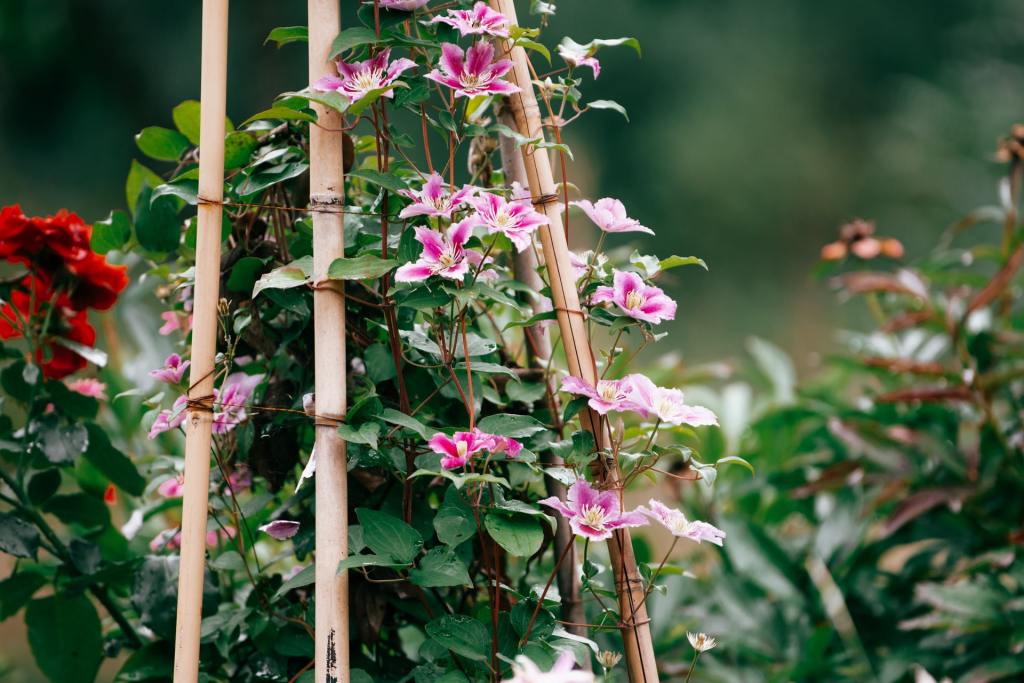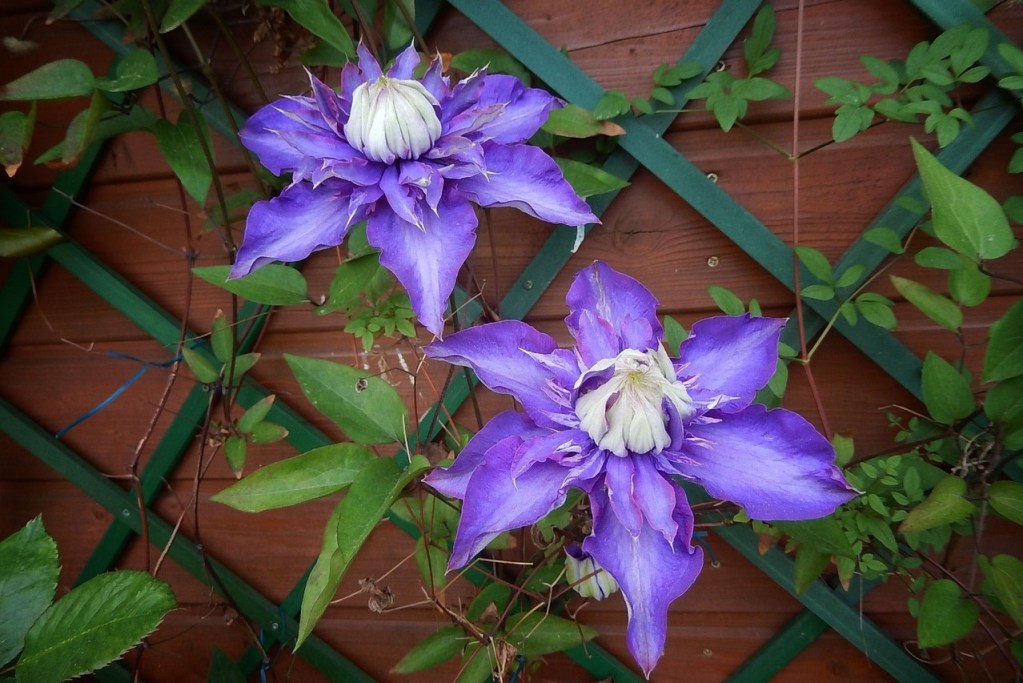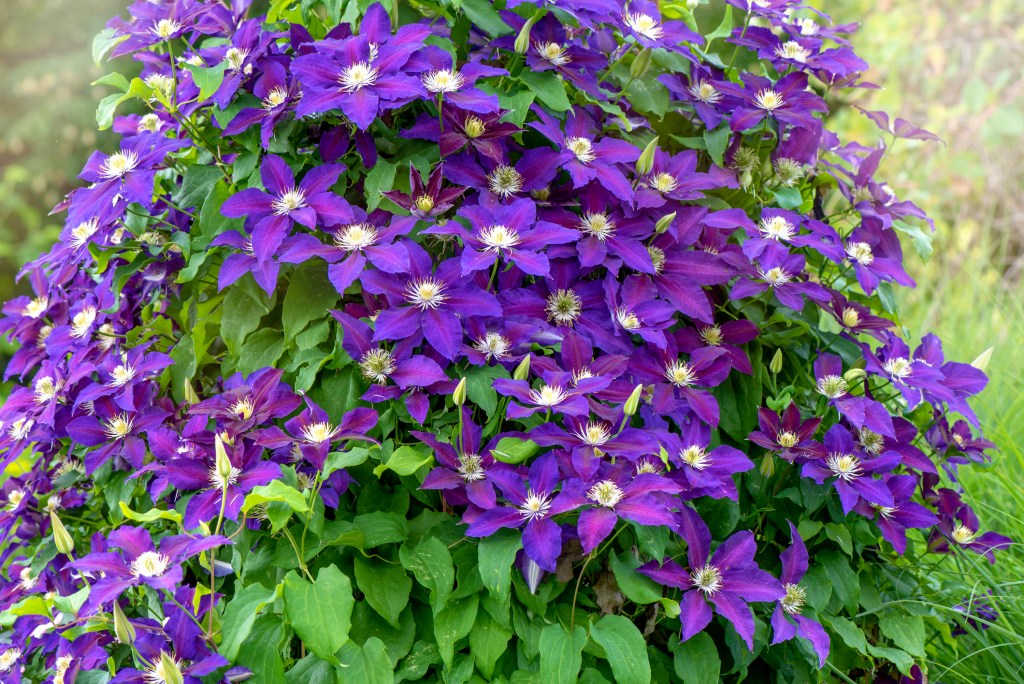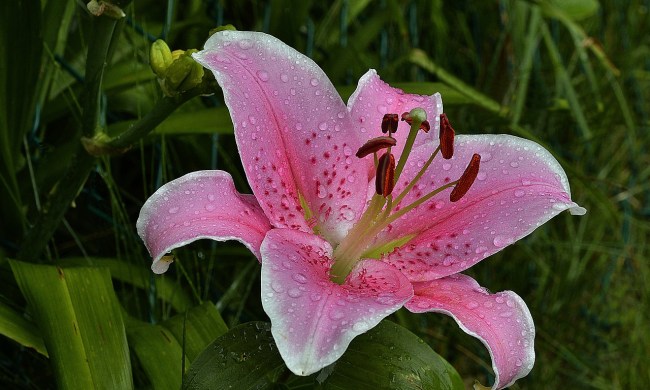If you’re looking to add texture, dimension, and color to your garden, one low-maintenance plant you can bring into your landscape is the ever-lovely clematis. Also known as the leather flower, this easy-going bloom can make for a beautiful fence or trellis statement, and its care is relatively straightforward. Here’s what you need to know about clematis care to keep your plant healthy and thriving.
What is clematis?
Hardy from zones 4 through 8, the clematis plant is native to China, Japan, and parts of North America. Although it can grow as a shrub, it’s often referred to as “Queen of the Vines” because the most popular type is a vining one with purple, star-shaped blooms.
In its natural habitat, this bloom can climb up trees and shrubs, but it’s often fixed to trellises, fences, and walls in landscapes. It does best when directly planted in the ground rather than confined to a container. With around 200 species and hundreds of cultivars, clematis flowers can come in many shapes, from cups to bells and stars.
They also come in a wide range of colors, including bicolor picks. And just as they vary widely across shapes and colors, the flowers vary in size — you can have anything from dainty blossoms to ones that measure 10 inches wide. The vines themselves can go between 5 and 80 feet long.

How to care for clematis
Clematis plants are low maintenance but high reward. That doesn’t mean no maintenance, though. Here’s what you need to know about clematis care to give your flowers the best environment possible.
- Sun: These flowers enjoy full sun for at least 6 hours a day, although some varieties can tolerate partial shade. There’s a saying that clematis like their heads in the sun and their roots in the shade. Ideally, you want to keep your clematis in cool soil, so ornamental ground cover, rocks, and mulch may help shade their roots.
- Water: While generally low maintenance, clematis flowers need weekly watering. They appreciate having consistently moist soil and being watered deeply, especially during periods of drought in the summer.
- Soil: Clematis should live in well-draining soil, as they may be susceptible to root rot and diseases in a soggy growing medium. To help them retain water, you can also mix compost into your garden soil. Remember that clematis like warm but not too hot soil, so the best time to plant clematis is during the spring or fall.
- Fertilizer: A balanced liquid fertilizer can help your vines grow and develop blooms. You can also add compost or fish emulsion during springtime as you’re planting your clematis. A 5-10-5 bloom booster once or twice a month can also encourage flowering.
- Support: Support is critical for this vining plant because its vines are fragile and prone to breaking. With twist ties, you can fix your clematis to a trellis, or use chicken wire to help it climb.

When do clematis bloom?
After blooming, clematis plants produce whirl-like seed heads. Some people find these seed heads quite attractive and allow their plants to go to seed. That said, you can prune many varieties of clematis to encourage them to rebloom again throughout the growing season.
How do you prune your clematis?
If you want your clematis to keep flowering, it’s helpful to prune these plants. Removing weak vines and seed heads redirects the plant’s energy toward growing new leaves and flowers. When and how you should prune your clematis depends on which type you have. To decide how to go about the pruning process, consider the three types of clematis:
- Group 1 (Early Flowering): Group 1 clematis have flowers that grow on last year’s wood, so they require very little maintenance or pruning. They bloom around early to mid-spring, so if you do any pruning to shape them, do so right after they flower. Avoid pruning them after July and into any woody trunks. Some examples include Clematis armandii and Clematis montana.
- Group 2 (Large Flowering): Group 2 clematis, known for their large flowers, bloom around early summer. Prune them back early in the year, around late January, to the topmost buds. Some examples include the “Nelly Moser” and “Ramona” cultivars.
- Group 3 (Late Flowering): Group 3 clematis features flowers that start blooming around late summer or fall. The best time to prune Group 3 clematis is in late winter, which means February or March. Find the nodes on your plant and cut back the growth anywhere between 6 and 24 inches. Some examples include Clematis viticella and Clematis jackmanii.
Give your garden an easy-going centerpiece with a hardy clematis flower that spreads beautifully on a trellis or fence. Whether you get a classic vining variety or a shrubby clematis, you have a wide range of options when it comes to bloom shape and color. With ample water, well-draining soil, sun, and perhaps some pruning, you can enjoy lovely, vigorous blooms for years down the line.




